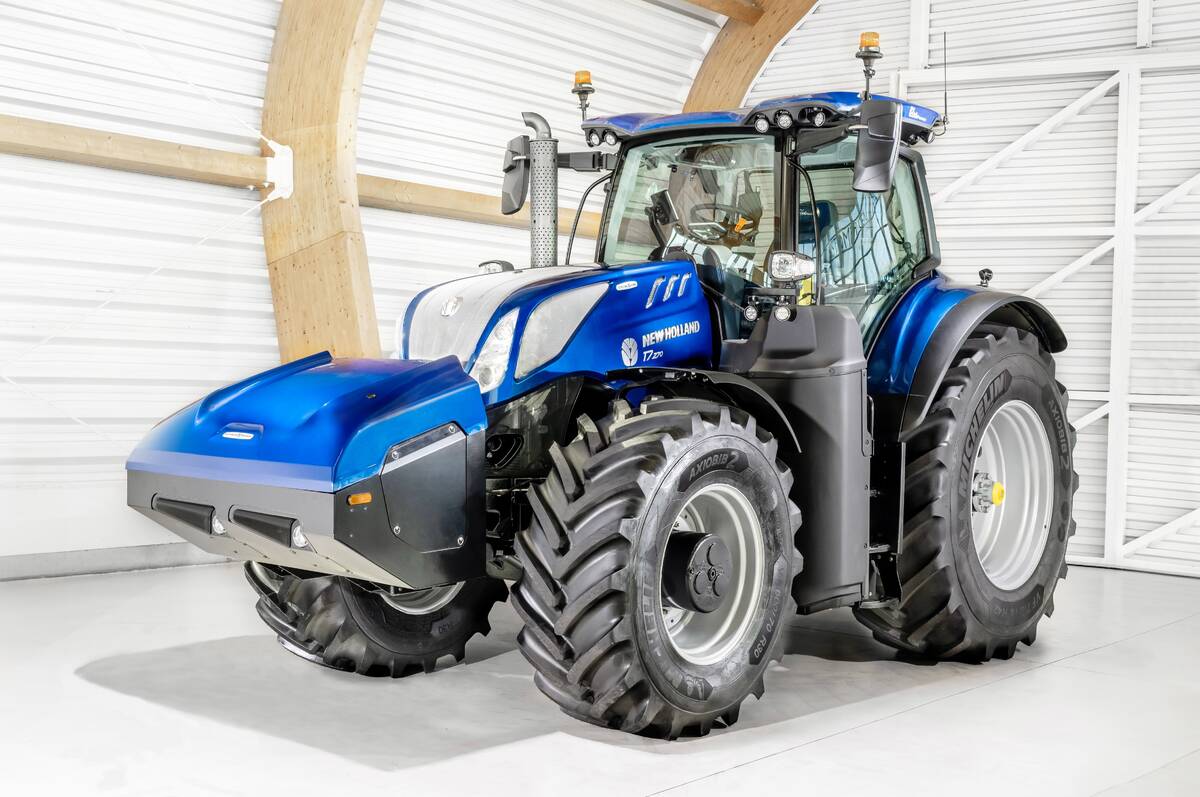HARROW, Ont. — Ontario farmers have long recognized the value of drainage, considering that 65 percent of the province’s cropland is tiled.
Now a growing number are taking advantage of a low-cost opportunity to reduce drought stress and nutrient losses with controlled drainage.
It’s accomplished by adding strategically placed risers, says Chin Tan, a water management and quality specialist with Agriculture Canada.
“In the summer, what happens is you don’t want to drain water. You want to keep it,” he said.
“Plus when you drain there can be a water quality problem.”
Read Also

Methane tractor debuts at Agritechnica 2025
New Holland has unveiled its production-ready version of a T7.270 methane-powered tractor at the Agritechnica farm machinery show in Hanover, Germany.
The risers prevent water from leaving the drainage tiles, allowing water to flow away only when it reaches a pre-determined level.
Full drainage capacity is restored at certain times of the year, such as spring when field work is necessary.
Researchers at the Eugene Whelan Experiment Farm near Windsor, Ont., have combined controlled drainage with an option to irrigate.
Water drained from fields is stored in an artificial wetland rather than being released. From there it can be re-turned to the field either through the drainage tiles, which is called sub-irrigation, or with drip irrigation.
Tan said research shows “closed loop” water recycling and management can improve soybean yields by 50 percent, tomato yields by 40 percent and corn yields up to 95 percent, which more than compensates for taking land taken out of production for water storage.
“By learning to save water for when it’s really needed, farmers will be able to take some of the guess work out of farming,” he said.
Dave Epp, who is working with Tan, has been able to increase yields to 50 tons per acre, which is significantly higher than the area’s average.
Controlled drainage systems are relatively inexpensive to install and involve attaching risers to an existing drainage system.
At the Whelan farm, these are located in concrete boxes sunk into ground. Tan said an even less-expensive “Big O” system is also available.
Unfortunately, sub-irrigation systems are not a good fit in many parts of Ontario.
Tiles are generally placed .6 to .7 metres deep in Ontario compared to 1.2 to 1.5 metres in parts of the United States bordering the Great Lakes and from .9 to 1.2 metres in Quebec. As a result, water levels can be raised by only a modest amount.
The Ontario depth was determined years ago to optimize water removal, Tan said.
Ditch depths and freezing temperatures are also limiting factors because drains must be kept clear over the winter to keep them from breaking.
A significant amount of controlled drainage occurs in Essex County and considerable interest in the Ottawa area, Tan said.
The experimental farm will be part of a tour during the International Conference of Environmental Indicators that the University of Windsor is hosting in August. The water monitoring systems that Tan designed will be of special interest.
Samplers continuously collect and measure surface runoff and tile drainage water.
“Year round, every drop of rainfall is captured and measured, literally 24 hours a day, seven days a week,” he said.
The system is one of the most extensive and sophisticated in the world. The data that’s collected is used nationally and internationally as a model for comparable systems.














